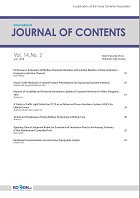- 권한신청
- P-ISSN1738-6764
- E-ISSN2093-7504
- KCI
 ISSN : 1738-6764
ISSN : 1738-6764
Analysis of Properties Influencing CO2 Transport Using a Pipeline and Visualization of the Pipeline Connection Network Design: Korean Case Study
Abstract
Carbon Capture and Storage (CCS) technologies involve three major stages, i.e., capture, transport, and storage. The transportation stage of CCS technologies has received relatively little attention because the requirements for CO2 transport differ based on the industry-related conditions, geological, and demographical characteristics of each country. In this study, we analyzed the properties of CO2 transport using a pipeline. This study has important implications for ensuring the stability of a long-term CCS as well as the large cost savings, as compared to the small cost ratio as a percentage of the entire CCS system. The state of CO2, network topologies, and node distribution are among the major factors that influence CO2 transport via pipelines. For the analysis of the properties of CO2 transport using a pipeline, the CO2 pipeline connections were visualized by the simulator developed by Lee [11] based on the network topologies in CO2 transport. The case of Korean CCS technologies was applied to the simulation.
- keywords
- Carbon Capture and Storage (CCS), Simulator, CO2 Transport, Network Topology, Pipeline Property
- 다운로드 수
- 조회수
- 0KCI 피인용수
- 0WOS 피인용수

